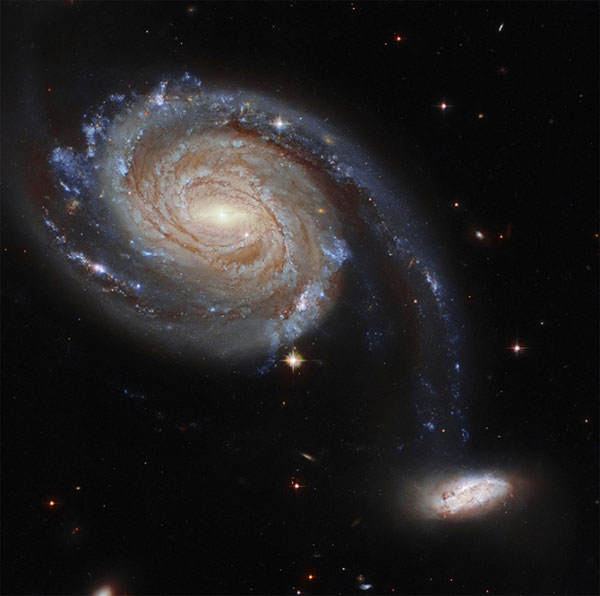The Hubble Space Telescope has sent back a stunning image capturing two galaxies bound together in the distant universe.

The Arp 86 system in the constellation Pegasus. (Image: NASA/ESA).
The system, named Arp 86, consists of the barred spiral galaxy NGC 7753 and the lenticular galaxy NGC 7752. NGC 7753 is a significantly larger central galaxy, while NGC 7752 appears to be a satellite galaxy with an orbit closely tied to one of the spiral arms of the main galaxy. They are located approximately 220 million light-years away from Earth in the constellation Pegasus.
“The gravitational dance between the two galaxies could ultimately lead to NGC 7752 being ejected into space or completely swallowed by its massive ‘neighbor,'” the European Space Agency (ESA) stated.
The stunning image was created using observations in infrared, optical, and ultraviolet light from the Advanced Camera for Surveys (ACS) on the Hubble Space Telescope, the Dark Energy Camera (DECam) on the Victor M. Blanco Telescope, and the Sloan Digital Sky Survey (SDSS) in New Mexico. Astronomers utilized nine filters to sample different wavelengths of light, resulting in vibrant colors for the image.
Arp 86 is listed in the catalog of peculiar galaxies compiled in 1996. The new observations from Hubble will provide a foundation for the James Webb Space Telescope, which is scheduled to launch later this year, to further investigate the relationship between young stars and the cold gas clouds where they form within the system.


















































